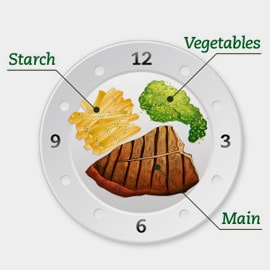Food plating is about the presentation of food to increase desire and impress your diners. Learn the basics of plating, Asian plating techniques and tips to provide inspiration for creating your own.
The 5 Basic Elements of Plating
- Create a Framework - Start with drawings and sketches to visualise the plate. Find inspiration from a picture or object. Assemble a ‘practice’ plate to work on executing your vision.
- Keep It Simple - Select one ingredient to focus on and use space to simplify the presentation. Clutter distracts from the main elements of your dish and might confuse the diners on what to focus on.
- Balance the Dish - Play with colours, shapes and textures to ensure diners are not overwhelmed. The presentation should never overpower flavour and function.
- Get the Right Portion Size - Ensure there is the right amount of ingredients and the plate complements the dish, not too big or too small. Strike the right proportion of protein, carbohydrates and vegetables to create a nutritionally balanced meal.
- Highlight the Key Ingredient - Ensure the main ingredient stands out and pay equal attention to the ‘support’. This refers to the other elements on the plate such as garnishes, sauces and even the plate itself.

Classical plating
The classical plating technique uses the three basic food items of starch, vegetables and main in a specific arrangement. A simple guide to a classical plating is to think of the plate as the face of a clock.
- Main: Between 3 to 9 o’clock
- Starch: Between 9 to 11 o’clock
- Vegetables: Between 11 to 3 o’clock

Food sharing is common, especially in Asian dining. Though challenging to plate, you can still use aesthetically pleasing garnishes and interesting bowls or containers, such as steamboats, dim sum baskets and even banana leaves, to heighten presentation.
Sauces: Create accents in the form of dots on the side of the plate or as a character on one side of the plate. When applying a sauce, lightly pour or drizzle it on the plate either over the dish or underneath.
Moulded Ingredients: Cleverly cut or sculpted ingredients can enhance the visual appeal of dishes. Slice fillets of meat at a bias to show doneness and quality. Sculpted food also provides height and structure and keeps the plate neat and clean.
Garnishes serves as an accent to perk up or highlight the colour of the main dish. It’s meant to enhance and match the flavours of the dish, not overpower it. Here are some simple guidelines to applying garnishes:
- Refrain from heaping garnishing on one corner of the plate.
- Provide a flash of colour and shapes by arranging the garnishes around the main dish.
- Garnishes should always be edible so avoid using parsley flowers, lemon twists, cinnamon sticks or raw herbs.
- Garnishing should be applied quickly to ensure the food arrives at the table warm.



